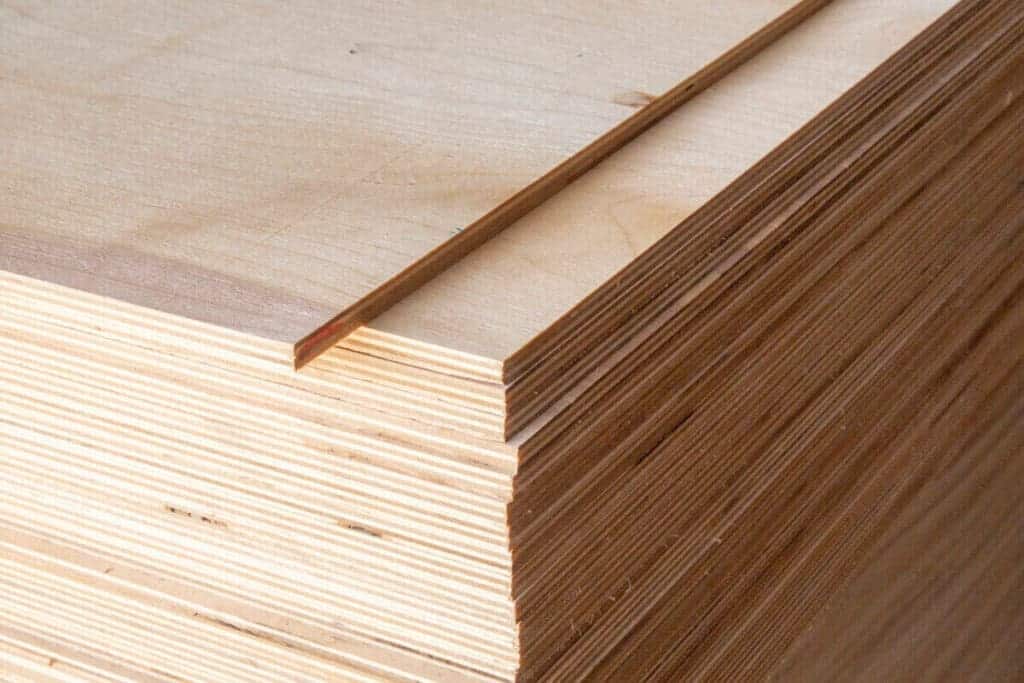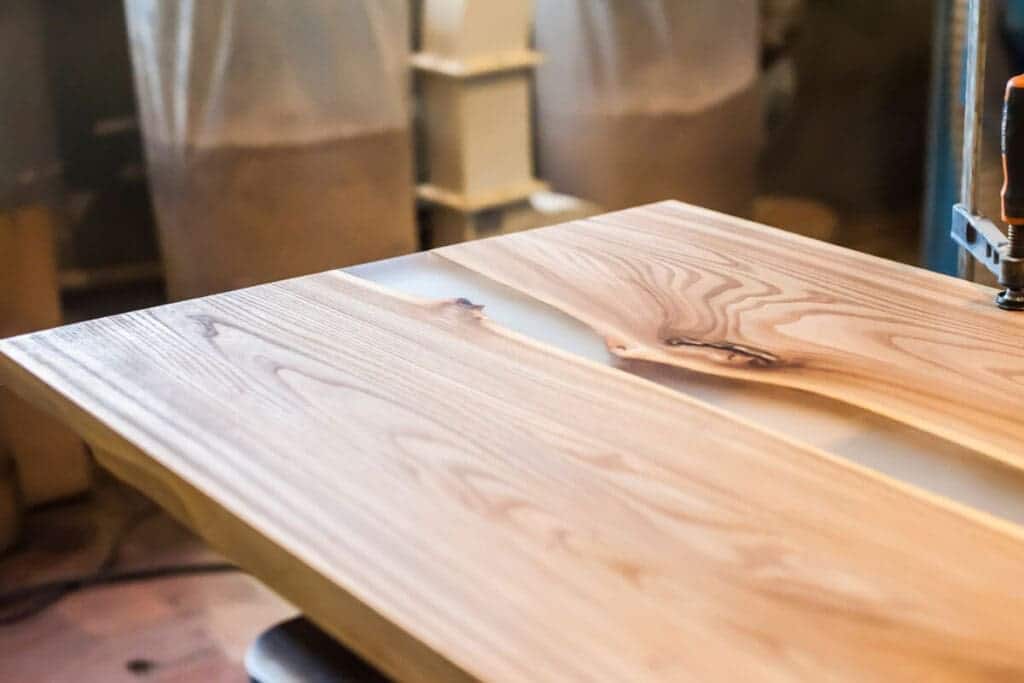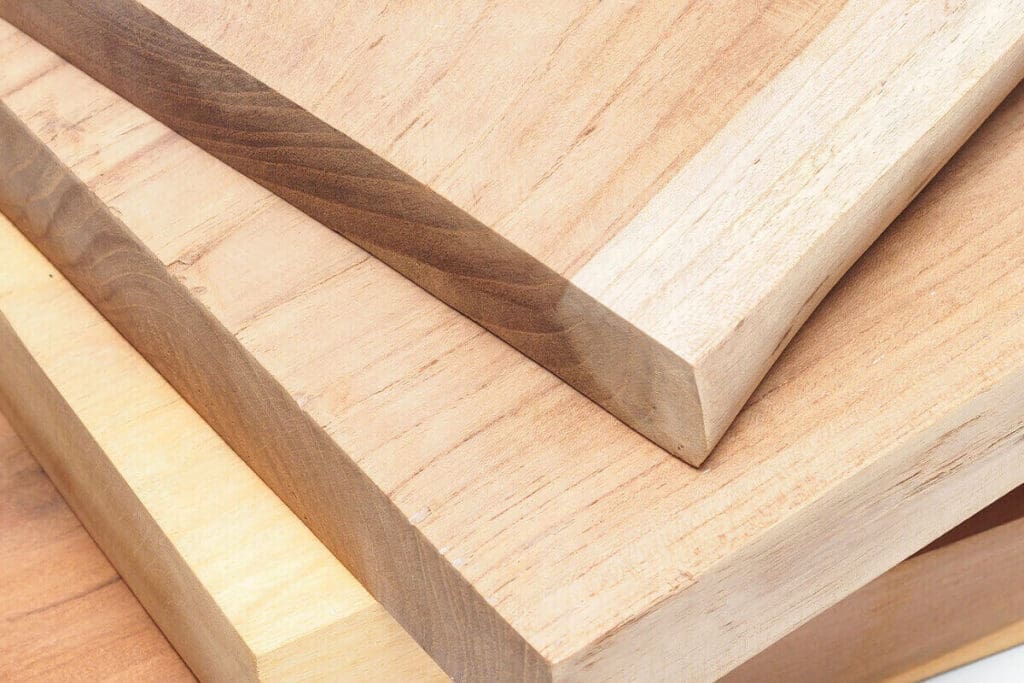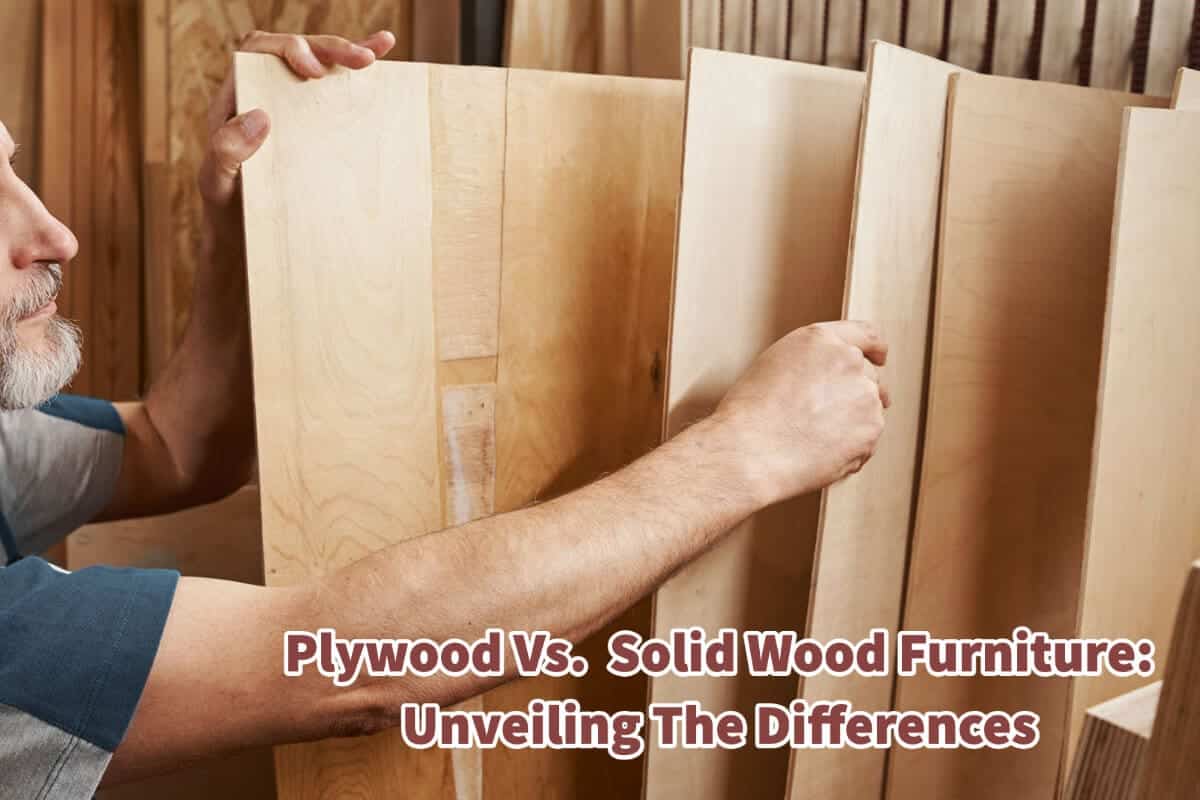Furniture is essential to our lives, offering functionality, aesthetics, and comfort to our living spaces. When choosing furniture, one of the critical decisions is whether to opt for plywood or solid wood.
Both plywood and solid wood materials have unique characteristics, historical significance, and differences. There are some unique differences between plywood and solid wood furniture, and each has a different historical background; it is good to understand why so many modern furniture pieces combine both materials.
Table of Contents
- Plywood Vs. Solid Wood Furniture: Unveiling The Differences And Historical Significance
- Plywood – A Versatile Wood Wonder
- Solid Wood – Timeless Beauty Of Solid Wood
- The Marriage Of Plywood And Solid Wood In Modern Furniture
- Plywood Vs. Solid Wood Furniture – Pros And Cons
- Making The Right Choice Of Solid Wood Vs. Plywood Furniture
- Related Content
Plywood Vs. Solid Wood Furniture: Unveiling The Differences And Historical Significance
Furniture plays a pivotal role in shaping the ambiance and functionality of our living spaces. When selecting furniture, one of the primary considerations is choosing between plywood and solid wood.
These two materials possess unique characteristics, carry rich historical significance, and have unique differences between plywood and solid wood furniture. It is essential to understand why or what kind of furniture you purchase.
Plywood – A Versatile Wood Wonder
Plywood is an engineered wood product made by gluing together thin sheets of wood veneers. Each veneer’s grain runs in an alternate direction, creating a more robust and flexible material than solid wood. This composition allows the plywood to resist warping and cracking, making it an excellent choice for furniture construction.

The Ancient Origins Of Plywood
The roots of plywood can be traced back to ancient Egypt, as early as 2600 BC. Egyptians discovered that laminating thin layers of wood with the grain running perpendicular to one another enhanced the strength and durability of their furniture. However, the industrial-scale usage of plywood did not commence until the 1850s.

Industrial Revolution And Plywood
The beginning of the industrial revolution also revolutionized the production techniques of plywood. The invention of rotary-cut veneers and steam-powered presses enabled mass production, leading to increased applications of plywood in furniture making. Its strength, cost-effectiveness, and flexibility made it a preferred material for various industries.
Solid Wood – Timeless Beauty Of Solid Wood
Solid wood has been used for centuries for all kinds of production, including furniture production. At Mondoro, we produce some solid wood furniture.

Solid Wood Defined
Solid wood furniture is crafted from natural timber, retaining the wood’s unique grain patterns and texture. Solid wood furniture exudes warmth, elegance, and a connection to nature that many cherish.
Historical Significance Of Solid Wood Furniture
Solid wood furniture carries a rich historical legacy. Traditional craftsmanship and heritage are embedded in the intricate woodworking techniques passed down through generations.

Solid wood furniture has stood the test of time, creating a sense of timelessness and enduring charm in homes worldwide.
The Marriage Of Plywood And Solid Wood In Modern Furniture
In many kinds of modern furniture, there is a perfect kind of marriage between both plywood and solid wood furniture. Below are some ways there could be a marriage between plywood and solid wood.
Advantages Of Combining Plywood And Solid Wood
In the realm of modern furniture design, the integration of plywood and solid wood offers a range of advantages.
- Enhanced Structural Integrity and Stability: The combination of plywood’s strength and solid wood’s rigidity creates furniture that can withstand the test of time.
- Cost Efficiency and Resource Conservation: Compared to solid wood, plywood’s affordability allows for cost-effective production while minimizing the use of precious timber resources.
Examples Of Combined Usage Of Plywood And Solid Wood
Plywood and solid wood fusion have given rise to iconic furniture designs and contemporary trends—examples of how plywood and solid wood are combined.
- Iconic Mid-Century Modern Designs: Renowned pieces like the Eames Lounge Chair showcase the harmonious combination of molded plywood shells and solid wood bases, capturing comfort and style.
- Contemporary Furniture Trends: Today, many designers and manufacturers blend plywood and solid wood elements to create visually appealing and functional furniture pieces that cater to diverse tastes and needs.
Plywood Vs. Solid Wood Furniture – Pros And Cons
Each material type has pros and cons when buying a furniture piece with plywood or solid wood. Below are one of the significant pros and cons.
Plywood Furniture Pros And Cons
Plywood furniture offers several advantages and some limitations. Here are some of the significant pros and cons.
- Pros of Plywood Furniture
- Affordability And Cost-Effectiveness: Plywood is generally less expensive than solid wood, making it an attractive option for those on a budget.
- Increased Strength and Durability – When used correctly, plywood in furniture can give increased strength and durability. Also, it will give some increased stability.
- Resistance To Warping – One of the significant advantages of plywood is that it is resistant to warping, so it helps the entire furniture piece be less likely to warp or shrink.
- Affordability And Cost-Effectiveness: Plywood is generally less expensive than solid wood, making it an attractive option for those on a budget.
- Cons Of Plywood Furniture
- Appearance Limitations: The layered construction of plywood may not appeal to those seeking the natural beauty and grain patterns found in solid wood furniture.
- Environmental Concerns: Some plywood may contain formaldehyde-based adhesives, which can emit volatile organic compounds (VOCs) and raise environmental concerns.
- Appearance Limitations: The layered construction of plywood may not appeal to those seeking the natural beauty and grain patterns found in solid wood furniture.
Solid Wood Furniture Pros And Cons
Solid wood furniture possesses its own set of advantages and disadvantages. Here are some of the significant pros and cons of solid wood furniture.
- Pros Of Solid Wood Furniture
- Natural Beauty And Warmth: The unique grain patterns, textures, and solid wood colors create a warm, inviting aesthetic that stands the test of time.
- Longevity And Timelessness: Solid wood furniture has proven durability, often lasting for generations with proper care and maintenance.
- Ease of Repair And Restoration: Scratches, dents, or damages to solid wood furniture can be repaired or restored quickly, ensuring longevity.
- Natural Beauty And Warmth: The unique grain patterns, textures, and solid wood colors create a warm, inviting aesthetic that stands the test of time.
- Cons Of Solid Wood Furniture
- Higher Cost: Solid wood furniture tends to be more expensive than plywood due to raw materials and craftsmanship costs.
- Susceptibility To Warping and Cracking: Solid wood furniture is more prone to warping and cracking when exposed to fluctuating humidity and temperature.
- Higher Cost: Solid wood furniture tends to be more expensive than plywood due to raw materials and craftsmanship costs.
Making The Right Choice Of Solid Wood Vs. Plywood Furniture
It can be hard to decide what is best when deciding between plywood and solid wood furniture. As a manufacturer, sometimes the choice is not as simple as either, but maybe what is best for the price and stability of the furniture piece.
Here are some factors to consider when choosing between plywood and solid wood:
Factors To Consider Between Plywood Vs. Solid Wood
Several factors should be considered when deciding between plywood and solid wood furniture.
- Budget And Affordability: Evaluate your budget and determine the cost range that aligns with your financial considerations.
- Aesthetic Preferences: Consider your style, the ambiance you wish to create, and whether you prefer solid wood’s natural beauty or plywood’s contemporary appeal.
- Intended Use And Durability Requirements: Assess the intended purpose of the furniture, the amount of wear and tear it will experience, and the desired lifespan.
Hybrid Options For Plywood Vs. Solid Wood
In addition to plywood and solid wood, various hybrid options are available in the market. Here are some of the major ones.
- Engineered Wood Products: Engineered wood products, such as medium-density fiberboard (MDF) and particleboard, offer cost-effective alternatives with unique characteristics and applications.
- Veneered Plywood Furniture: Veneered plywood furniture combines the structural integrity of plywood with the aesthetic appeal of solid wood veneers, offering a compromise between the two options.
Plywood and solid wood furniture each bring their strengths and qualities. By understanding the differences and historical significance of these materials and considering factors such as budget, aesthetics, and durability requirements, you can make an informed decision when selecting furniture for your space.
Whether you choose plywood, solid wood, or a combination of both, it is important to prioritize quality craftsmanship and sustainability to ensure that your furniture not only enhances your living environment but also stands the test of time.
At Mondoro, we would love to help you decide which material would be best for manufacturing your home decor and furniture product.
Find out more about how Mondoro can help you create, develop, and manufacture excellent home decor and home furniture products – including lacquer furniture. Don’t hesitate to contact me, Anita. Check out my email by clicking here or become a part of our community and join our newsletter by clicking here.
Mondoro gives out a FREE Lookbook to anyone interested. You can receive a copy of our latest Lookbook by clicking here.
Listen to our Podcast called Global Trade Gal. You can find it on all major podcast platforms. Try out listening to one of our podcasts by clicking here.
Subscribe to our Mondoro Company Limited YouTube Channel filled with great videos and information by clicking here.
Related Content
The Pros And Cons Of Lacquer Vs. Enamel Finishes
Lacquer and enamel are popular finishes used in various applications, from woodwork and furniture to cars and machinery. While both can provide a glossy finish, they differ in composition, durability, and application.
You can discover more by reading The Pros And Cons Of Lacquer Vs. Enamel Finishes by clicking here.
Guide To Acacia Wood Vs. Rubber Wood
Acacia is a hardwood that is found in Asia and throughout the world. The wood has a lot of color variations and a grain that works well on many types of furniture and other products. Rubber wood is also an excellent wood to use for furniture and other kinds of productions. It works well with many different types of finishes but does not have much of a grain pattern.
You can learn more by reading Guide To Acacia Wood Vs. Rubber Wood by clicking here.
Rattan Material: The Sustainable Choice For Furniture & Home Decor
Rattan is one material that is gaining popularity as it is considered a sustainable choice for furniture and home decor. Not only is rattan a sustainable choice for home decor and furniture, but it also has a lot of top qualities that make it an excellent choice. Read on as we list the 10 top qualities of using rattan material for home decor and furniture production.
You can learn more by reading our blog Rattan Material: The Sustainable Choice For Furniture & Home Decor by clicking here.

